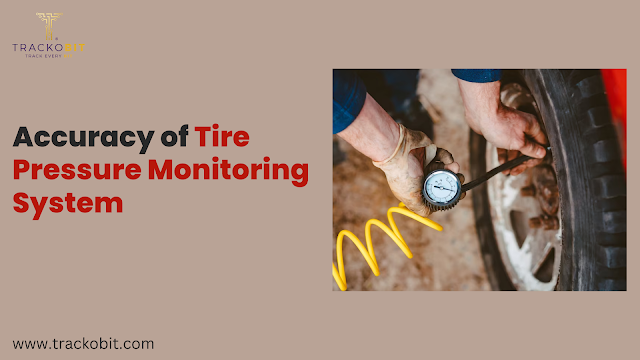How accurate is the tire pressure monitoring system?
Imagine your vehicle as a well-coordinated orchestra, with each component playing a crucial role in harmony. Among these components, tyres are the unsung heroes that are not given enough credit. They support the entire weight of a vehicle ensuring a smooth and safe journey.
Therefore, maintaining the health of your tires is not only about keeping their performance intact but also about your overall vehicle health. Here comes the Tire Pressure Monitoring System, the watchful guard of your tyres.
What Is the Tire Pressure Monitoring System and How Does It Work?
Tyre Pressure Monitoring system is a technology that relies on the teamwork of hardware (sensors) and software to monitor the air pressure in the tyres of the vehicles. Let’s know how this happens. A minimum of three to four sensors are installed in the tyres. These sensors keep tabs on the air pressure level in the tyre. So, if the pressure suddenly drops below or exceeds the recommended levels, the TPMS alerts the managers and the driver.
Now that you have understood the basics of TPMS, let’s learn about its benefits too
Benefits of Using TPMS in Your Fleet
Here are the top pros of using TPMS
Making safety a priority
Your society guards are responsible for keeping the residents safe, right? Likewise, TPMS also looks after the overall safety of vehicles, by keeping the tyres safe and running. Thus, reducing the risk of frequent tyre blowouts.
Increasing the life expectancy of tyres
Also, TPMS helps drivers maintain the recommended air pressure range in tyres at all times, the risk of wear and tear leading to road accidents automatically decreases. This further enhances the life expectancy of tyres.
Reduced downtime
Tyre Pressure Monitoring system plays an important role in preventing unexpected vehicle breakdowns. Wherever your vehicle goes, Tyre Pressure Monitoring system ensures that the set air pressure is maintained in the tyres throughout the journey. So, when the tyres are in optimal conditions, there will be less vehicle downtime.
Cost savings
Working as the full-time guard of tyres, Tyre Pressure Monitoring system ensures that optimal tire pressure is maintained which keeps the vehicle running. Since the managers and drivers get instant alerts about the rise and drop in the pressure levels, they get the time to take corrective measures to maintain that pressure. Thus, saving the money that gets spent on changing or repairing the tyres.
Ensuring the overall well-being of vehicles
As in an orchestra, the smooth functioning of all the components is required to maintain harmony. Similarly, in a vehicle, all the elements are required to function optimally to keep it running. Since tyres are one of the major components and Tyre Pressure Monitoring system ensures its health, the overall well-being of the vehicles is maintained.
Minimized fuel consumption:
Underinflated tyres increase the rolling friction between the tyres and the road. This leads to excessive fuel consumption. With the help of TPMs, managers can keep this at bay.
Environmental impact
We have reached the year 2023 and everybody is concerned about the environment today. TPMS acts as a saviour for reducing the carbon footprints contributed by commercial vehicles. How? When tires are properly inflated, the rolling resistance decreases. This means that the vehicle will burn less fuel to move forward. Therefore, less carbon emissions into the atmosphere.
These were the top benefits that TPMS offers, Now let’s talk about how accurately it works;
Accuracy of TPMS
We’ve finally come to the part where we address the million-dollar question: How accurate is TPMS?
TPMS technology has come a long way in terms of accuracy and reliability. It uses two types of sensors; indirect and direct sensors. Indirect sensors are not responsible for measuring the air pressure in tyres. Rather, they use the antilock braking system's wheel-speed sensor to detect that the rotation of one tyre is faster than others.
On the other hand, direct sensors do the main work by measuring the actual tire pressure. They’re highly precise, with the ability to detect pressure variations as small as 1-2 psi (pounds per square inch). This level of accuracy ensures that fleet managers receive timely warnings whenever the tire pressure deviates from the recommended range.
However, it's important to note that the accuracy of TPMS can be affected by factors such as sensor quality, temperature fluctuation and tire conditions.
For example, in extreme hot or cold weather conditions, the tire pressure gets affected. Let’s understand how. The hot weather makes the air inside the tire expand. So, if the tire pressure is already at or near the recommended level, the temperature rise can cause an increase in air pressure, causing over-inflation.
On the other hand, cold temperature tends to have the opposite effect on the air pressure inside the tyre. It causes the air molecules to slow down and contract, leading to under-inflation of tyres. Both over and underinflation can lead to inaccurate readings.
Summing up!
In the symphony of vehicle performance, Tyre Management System takes centre stage, ensuring our tires remain in harmony with your journey. It’s a guardian angel that blesses fleet managers with safety, efficiency and cost savings, alerting them when the tyres need their attention.
Coming to the accuracy part of TPMS, modern technology has brought us highly reliable sensors. However, it’s important to remember that no technology is bulletproof and occasional checks and maintenance might be required to keep the TPMS up and running.
So, next time your TPMS alerts you to pay attention to your tire’s health, trust it as a reliable friend giving you a gentle reminder to look after your tire’s health.
Related Blog:- What is Route Planning in Logistics?
Top 10 Navigation Apps for Android and iOS | 2023

.png)
.png)
Comments
Post a Comment